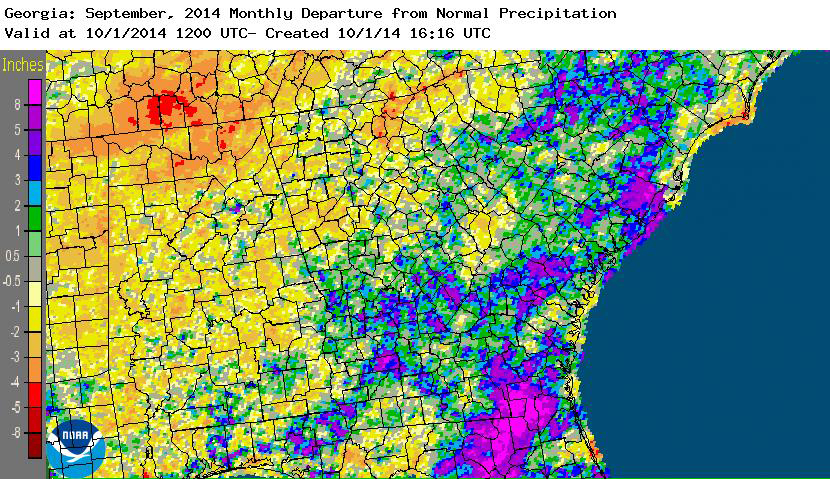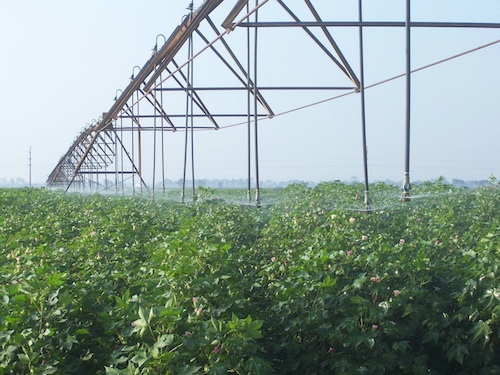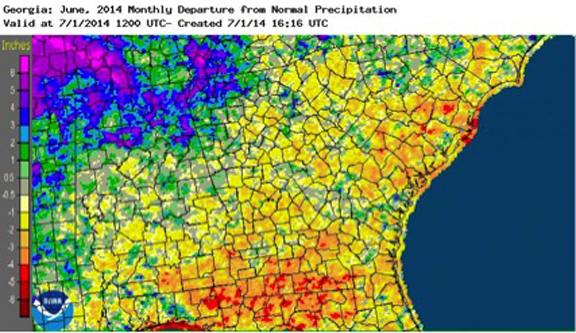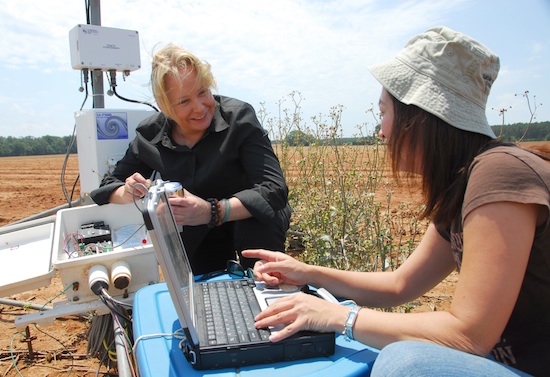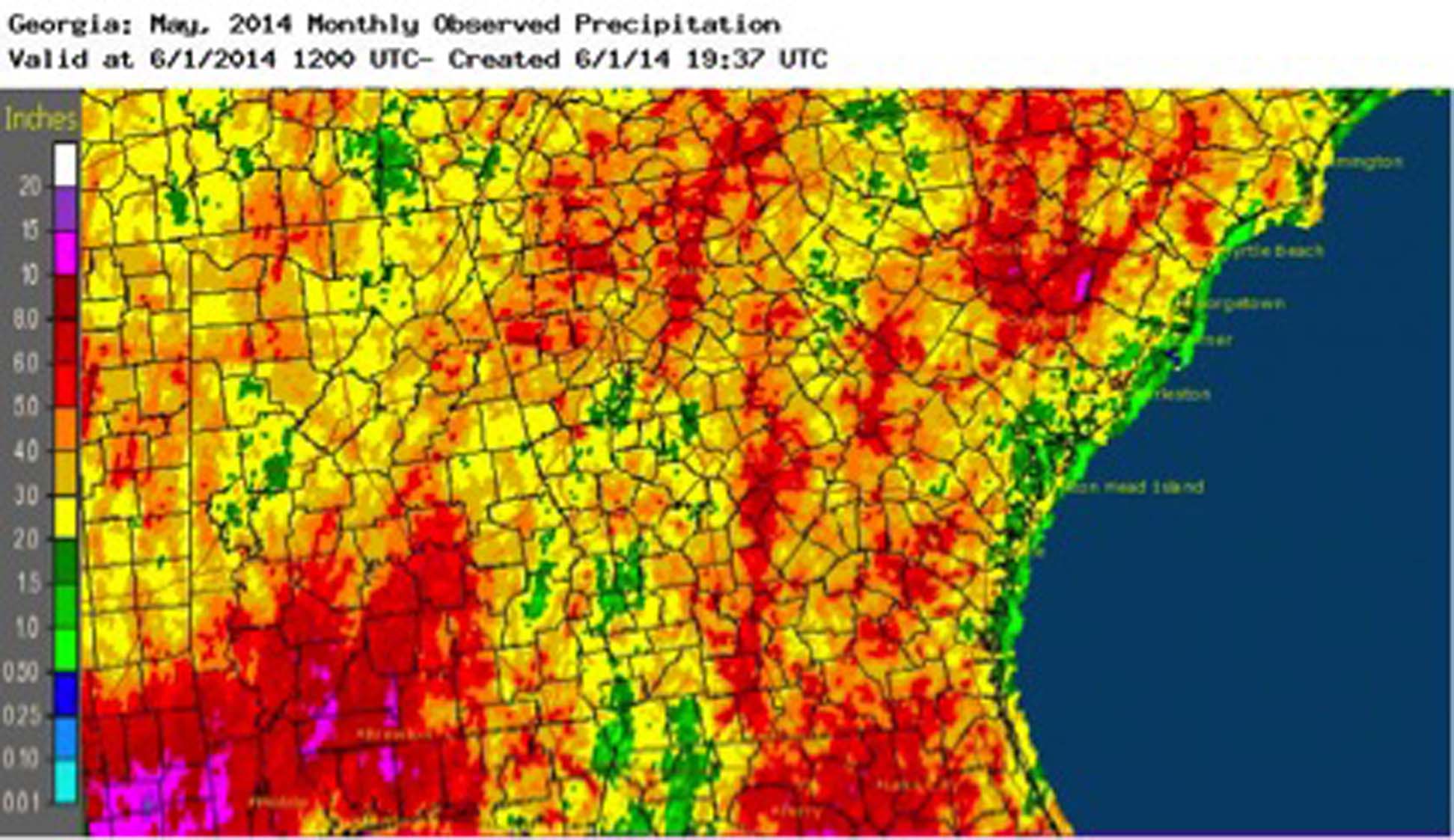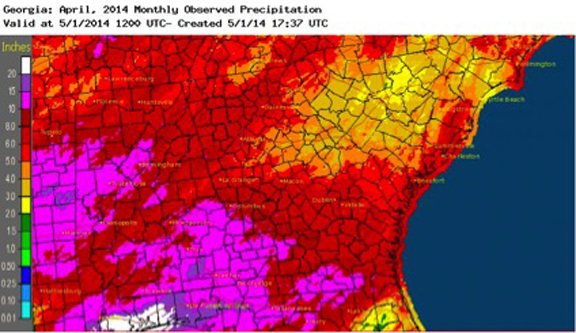 CAES News
CAES News
Warm December
After a bone chilling November, Georgia saw warmer and wetter weather in December. The rain eliminated drought across the state, although some patches of abnormally dry conditions were still present at the end of the month.

